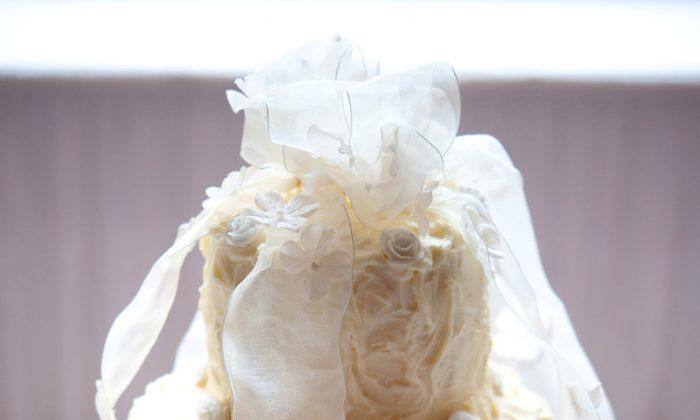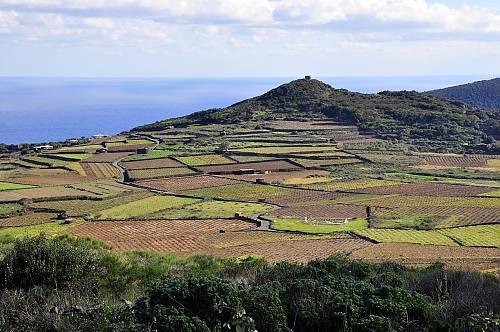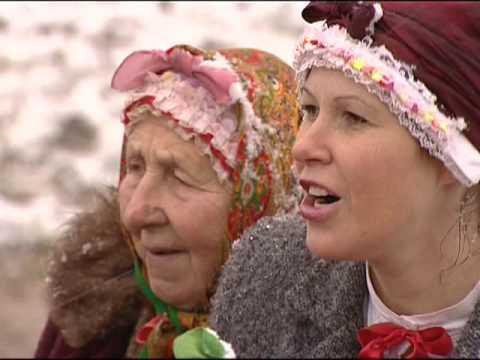This year “green” weddings seem to be the trend and making your own cake is definitely a “green” thing to do. It’s not only eco-friendly but also economical. You can choose cake-decorating colours that harmonize with the bridal party outfits and a theme that blends with the statement you wish to make.
How you decorate it is up to you and your friends. All sorts of ready-made icings in tubes and pretty floral decorations are available in supermarkets, or you might want to decorate with ribbons and edible silver or gold, available at Asian shops.
For tips on actually constructing the cake, go to www.wilton.com/cake/tiered-cakes/ because using dowel rods and a cardboard or wooden base is necessary and this site shows how to do it.
The three layers are enough to serve 90 people with small 4 cm x 7.5 cm (1 1/2 x 2 1/2-inch) servings.
Bottom layer:
Makes 56 servings
White Cake
This recipe can be doubled and still give excellent results. It makes enough for two 30 cm (12-inch) pans.
875 ml (3 1/2 cups) cake flour
20 ml (4 tsp) baking powder
2 ml ( tsp) salt
250 ml (1 cup) soft butter
500 ml (2 cups) sugar
250 ml (1 cup) milk
5 ml (1 tsp) vanilla
7 or 8 egg whites, beaten stiff but not dry
Preheat oven to 190º C (375º F.).
Sift dry ingredients together, except sugar. Cream butter, add sugar gradually, and then add the flour mixture in thirds, alternating with the milk. Beat in vanilla and fold egg whites gently into the cake batter. Bake in greased pans for about 30 to 35 minutes or until a toothpick comes out clean.
Lemon Filling:
This makes approximately 375 ml (1 1/2 cups), enough to put between the two layers of the white cake.
175 ml (3/4 cup) sugar
32 ml (2 1/2 tbsp) cornstarch
1 ml (1/4 tsp) salt
125 ml (1/2 cup) orange juice
40 ml (3 tbsp) lemon juice
2 ml (1/2 tsp) lemon rind, grated
15 ml (1 tbsp) butter
3 egg yolks, slightly beaten
Mix sugar, cornstarch and salt together in top of a double boiler. Gradually stir in orange juice, lemon juice, grated lemon rind, and butter. Cook over boiling water for five minutes, stirring constantly. Cover and cook gently for 10 more minutes without stirring. Remove from heat and gently stir in egg yolks. Return to heat and cook for about two or three minutes. Cool completely before using.
Middle Layer:
Makes 24 servings
Fudge Cake
This makes two 21 cm (8-inch) round cakes.
125 ml (1/2 cup) butter
113 g (4 oz) dark chocolate
4 eggs, separated, room temperature
Pinch (1/3 tsp) salt
500 ml (2 cups) sugar
5 ml (1 tsp) vanilla
250 ml (1 cup) all-purpose flour, sifted
Preheat oven to 180º C (350º F). Melt butter and chocolate in a double boiler over gently boiling water. Cool. Beat the egg yolks and salt until light and foamy. Gradually add the sugar and vanilla. Combine this with the cooled chocolate mixture by hand with a few quick strokes, and then fold in the flour. Beat the egg whites until stiff and gently fold in. Bake for about 25 to 30 minutes, or until a toothpick comes out clean.
Jam Filling: Melt 75 ml (6 tbsp) apricot or cherry jam with 5 ml (1 tsp) of water so it spreads easily between the layers.
Top Layer:
Makes 10 servings
Orange Cake
This makes two 12 cm (5-inch) round cakes.
125 ml (1/2 cup) chopped candied orange and lemon peel
37 ml (1.5 oz) rum
75 ml (6 tbsp) butter, room temperature
85 g (3/8 cup) sugar
1 egg plus 1 extra yolk
2 ml (1/3 tsp) grated orange peel
125 ml (1/2 cup) pastry flour
45 g (3/8 cup) potato flour
Preheat oven to 200º C (400º F). Steep the candied fruits in rum for an hour. Cream butter, add sugar and mix until creamy. Add the egg and then the yolk, mixing well after each addition. Add the orange peel, then the candied fruits. Sift the two flours together and add to the other ingredients, mixing until smooth. Butter cake pans and pour the batter in. Bake for approximately 25 to 30 minutes or until a toothpick comes out clean.
Filling: chestnut puree (from France) or marzipan rolled thinly to fit each cake.
Butter Cream Frosting
This classic frosting may be used to completely cover the cake. If some is set aside for decorating, make it thicker by adding more icing sugar and food colouring, if desired.
This makes approximately 5 cups.
500 ml (2 cups) unsalted butter, softened but not in the microwave
700 g (6-7 cups) icing sugar
25 ml (2 tbsp) vanilla (use almond flavour if you want a whiter icing)
2 ml (1/2 tsp)salt
75 to 100 ml (6 to 8 tbsp) milk or cream
Beat butter in mixer with paddle at medium speed. Add half of icing sugar and set mixer at low speed while incorporating the sugar. Turn speed back to medium and add vanilla or almond flavouring, salt, and half the milk. Beat well, then add the rest of the icing sugar and as much milk as it takes, one tablespoon at a time, to make a spreadable frosting. Add more icing sugar if it is too thin, and more milk if too thick.
Susan Hallett is an award-winning writer and editor who has written for The Beaver, The Globe & Mail, Wine Tidings, and Doctor’s Review, among others. She is currently the European editor of Taste & Travel International. Email: [email protected]





